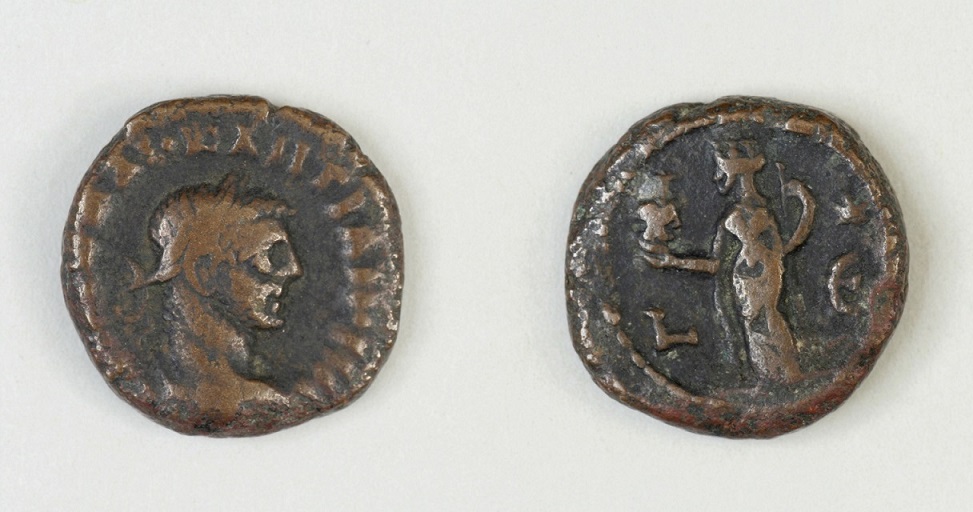
This tetradrachm coin was struck at Alexandria, Egypt, under the Roman Emperor Diocletian (244-311 AD). It was probably issued at around 288 AD. The coin, allegedly picked up in Vansittart Road, Windsor, has naturally corroded over the years. Yet, the portrait in profile of Diocletian is clearly visible on the coin’s obverse, circumscribed by Greek text. The reverse, however, is a little more di